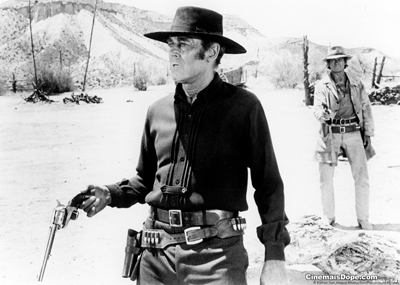
Genre is a French word that means type or kind. Most students will be aware of genre as a way of putting films, television programmes and other media texts into groups that have things in common, such as the story, or the ‘look’ of a film, or the characters, the settings and even the way the characters dress.
Genre, especially in film, is a key concept because it is more complex than just a way of putting similar films together in a group.
Brief DefinitionGenre is a way of putting media texts into categories which share similar characteristics.
Genre & Audiences
Genre helps audiences build up expectations about a film.
It helps in the pre - selling of a film. Filmgoers like to have a general idea of what film they are about to see. But audiences get bored with too much repetition; they like to see a genre change, and evolve by responding to contextual influences to do with the way society changes.
Genre and Film Producers
Genre is a tool used particularly by Hollywood producers who like to repeat generic formulas that are commercially successful. Producers have been criticised for repeating the same genre time after time, but this is a commercial model that works well in many industries. Think of how fashion in clothes repeats itself, revealed in headlines like ‘The Mini Skirt is Back’.
A well-known genre such as thriller is a format that has worked well in the past and so film producers like to think it will be successful again. Particular genres are linked with certain directors – e.g. Martin Scorsese with the gangster genre.

Romantic comedy often has actors and writers linked with the genre. The actor Hugh Grant and the writer Richard Curtis worked together to create a number of successful British ‘Romcoms’ including Four Weddings and a Funeral (1994), Notting Hill (1999) and Love Actually (2003) – notice the similarities in terms of characters and comedy conventions to do with the way the boy meets girl plot is constantly derailed by comic situations.
The trick for producers is to adapt aspects of the genre – known as the codes and conventions - just enough to excite audiences without losing the core values of the genre. This often leads to:
Hybrid or Mixed Genres
These are very popular, as producers think that by mixing say the thriller genre with the action genre they will find the traditional audiences for both genres. The Bourne Ultimatum (2007) is described as an action/thriller. The US hit TV show Ugly Betty has been labelled a ‘dramerdy’ as a mix of the comedy genre and the drama genre – this is a good example of a hybrid. This seems an unnecessary name for a situation comedy, but this television genre is not as well appreciated in the US and by world wide audiences as it is in the UK.
A successful genre formula can be repeated over time, but genres do need refreshing and adapting to modern tastes and fashions.
Some Major Genres
Science Fiction

The Matrix series
AI: Artificial Intelligence
28 days Later
Transformers
Independence Day
Men in Black
The Star Wars Films.
Nearly 30 major Sci Fi films were distributed in 2006 and 2007.
Musicals

New musicals keep arriving from the US e.g. Hairspray (2007).
Other musicals include:
Moulin Rouge
Cabaret
The Lion King
West Side Story
Grease
Saturday Night Fever
Phantom of the Opera
Gangster

Goodfellas (1990), is a famous modern gangster. The genre was very popular in the 1930 and 1940s with classic films such as Angels with Dirty Faces. Gangster genre has been partially recreated in the UK with Guy Ritchie films like Lock, Stock and Two Smoking Barrels (1998) and Snatch (2000) although these could also be classed as Thrillers.
Western

Stagecoach (1939)
High Noon (1952)
The Searchers (1956)
The Magnificent Seven (1960)
Unforgiven (1992) and recently the remake of 3.10 to Yuma (2007)
Romantic Comedy
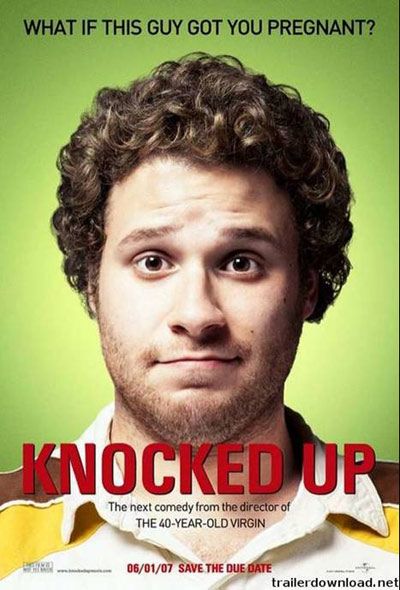
The recent Judd Apatow movie Knocked Up (2007) is a modern example of the genre.
Older examples include Notting Hill, Love Actually, 10 Things I Hate About You, Music and Lyrics, As Good As It Gets, My Best Friend’s Wedding, Shakespeare In Love, Bridget Jones’s Diary. The largest grossing romantic comedy ever (source: Box Office Mojo) is My Big Fat Greek Wedding (2002).
Thriller

Films in this genre range from The Godfather Series, to The Usual Suspects, Leon (1994) and The Bourne Ultimatum (2007). This genre has become so broad that it includes a huge range of modern films. Some US websites have at least 3 types of thriller: political (Air Force One and Traffic), erotic (Fatal Attraction), and serial killer (Hannibal).
Horror

Includes a range of traditional horror such as Dracula films including Dracula (1992), Van Helsing (2004), torture horror Saw II and horror comedy Ghostbusters.
Most commentators would put the Scream Series and Scary Movie Series in the Horror genre as good examples of the genre evolving into parody.
Situation Comedy

In television, the genre of Situation Comedy describes a particular type of comedy that takes place for the most part in one place (situation).
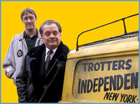
Examples include:
Fawlty Towers (BBC)
The Family (BBC)
Only Fools and Horses
The Vicar of Dibley
Men Behaving Badly
Will and Grace (C4) and Ugly Betty C4
Animation

Animated films (cartoons) and animated children’s television series tend to be grouped under the genre of animation.
The studios like to label the feature film length animations as hybrids: Ratatouille (2007) is a family/comedy/animation.
Activity
Look through the listings page of a national Sunday broadsheet, such as The Sunday Times or find a listings page on the internet or look at a copy of Radio Times. Try to give a genre to all the films and some of the television programme listings.
Of course you will not have seen many of the films but there should be enough clues in the publicity material to give you some idea of the genre. Look carefully at any full page posters for films. You are likely to find the TV listings a little easier.
TV genres are largely defined by content: news, sport, soaps, quiz, game show, sitcom, drama, film, factual (Coast BBC), documentary (Superhuman: Giants ITV), reality (Big Brother C4), Childrens, Youth, Travel, arts, and a strand known as Lifestyle which covers all the cookery, DIY, Gardening, bringing up baby programmes.
Activity
Research the most common genre in terms of the number of programmes broadcast each week. Make a list. Are these programmes the most popular in terms of audience size? Compare your research with that of another student. Which genres do you think will attract the biggest audiences – why is that? Which genres do you like best?
What makes up a genre?
Each genre is made up of a number of components, which the audience can recognise as being part of that particular genre. Some of these components are; story and plot, situations and locations, themes and values, and characters. Plot means the way the story is told to an audience. These elements are known as generic signifiers because they indicate a particular genre.
For example: a Stetson hat, and a revolver and a Winchester rifle indicate the western genre.
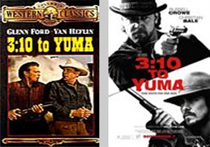
3.10 to Yuma has been successfully remade in 2007, 50 years after its original production. A good western can still excite modern audiences.
Notice how the same iconography is used in both posters.
For a full history of the western genre see Tim Dirk’s website [url=http://www.greatestfilms.org]http://www.greatestfilms.org[/url] and www.filmsite.org
Iconography
You need to know this word and use it in your essays
It comes from the word icon. An original meaning of an icon is a painting representing Christ or a saint – often found in a Greek church. You may know an icon as a small image on the toolbar of your computer that represents something else like email or your printer. The icon sign of a pair of scissors represents CUT – click on this icon and it cuts out a section of text on the page. An icon is an image of something that has more than its obvious (denotative) meaning.
This iconic sign for a telephone represents any and every type of telephone handset. We all agree that this sign means any type of telephone not just one old fashioned telephone. Followed by some numbers, and it means someone’s telephone no.
Photographs and moving images are iconic signs that represent real people and real things suggesting several meanings to audiences.
In Media Studies these signs are known as polysemic – suggesting to audiences many possible meanings depending on how the signs are read.
The media student has learned that when we view a film or TV programme we are actually looking at a sign, not the real thing in real life. This is important because of the way we ‘read’ signs to gain meaning. Different people in different situations read signs in different ways. That is why everyone has different views about the same film.
Iconography is the way we describe the particular signs that identify a particular genre.
We are back to the Stetson hat, the revolver and the Winchester rifle as part of the iconography of the western genre.
Codes And Conventions
Codes and conventions are agreements between audiences and media producers about certain things that work in a particular genre.
For example, in a film musical you are not worried when suddenly one of the characters breaks out into song – think of the famous opening to the film The Sound Of Music. We think it is quite acceptable for Julie Andrews to open her mouth and sing with musical backing about the hills being alive with the sound of music, rather than speak the lines. This is a convention of the musical.
An important aspect of understanding genre is to know the period I which a film was made.
The core values at the time the film was made will affect how audiences saw it at the time, and how audiences see the film now. The technology of film making has changed considerably from the 1930s to the present day. Modern films use Steadycam a great deal, and require less lighting than the films made in Hollywood up until the fifties. Faster film stock and greater use of location filming transformed cinema in the 60s. Now High Definition video is beginning to replace film on some shoots and in some cinemas.
Story & Plot
Particular story lines and plots, are associated with certain genres. Crime series and police dramas usually start with a crime being committed, and the plot involves solving the mystery of who committed the crime and why.
Westerns are often about an unknown man showing up to save a family (The Searchers) or save a whole town (High Noon and The Magnificent Seven).
Romantic comedies are about boy meeting girl, and eventually marrying or at least living happily ever after. Horror plots often rely on recycling myths and legends to do with human blood eating vampires, or monsters, and zombies. Modern horror also explores the monsterlike person in our neighbourhood (Halloween).
Themes & Values
Values in a film are not the same as codes and conventions. Values are the ideological and cultural ideas embedded in a film. In a Western, such as a Clint Eastwood film, the lone gunslinger represents the power of good to destroy evil.
In gangster films greed and the lust for power or wealth undermine the possibly attractive, but deeply flawed, central gangster character. Jealousy, revenge, loyalty and deception are themes of many thrillers and cop movies.
In horror films the monsters and zombies can be interpreted as metaphors for serious diseases, death or destiny. In the end the films give some hope that the audience’s worst fears can be overcome. The all-conquering hero such as Batman or Superman or Spiderman (why are they all men?) offers audiences hope that a solution can be found to some of the ills that beset the world.
These archetypal heroes inhabit the fantasy/action genre, and appeal to the audience’s inner desire to become a respected power for good. The values are those of good conquering evil.
Sci-Fi replaces the zombies with aliens. Audiences are left feeling safe in the knowledge that the unknown threats from monsters in outer space can be overcome.
Situations and Locations
Soaps have the well-known pub, the street, the café. Police dramas have car chases, the mean back streets location, and prison cells. Sci-Fi is immediately recognisable by wasted, bleak moonscape style landscapes and deep blue starry skies, high-tech interiors of spaceships and imitations of constellations and galaxies.
Characters
Some genres put emphasis on character. The Film Noir genre requires a hard boiled, down at heel, investigative, straight talking type of man as the main character, and a ‘femme fatale’ to lead him astray. You can research the Film Noir genre on a large number of websites.
Other codes and conventions include costume – think of the designer dressed James Bond. Historical time – dramas set in the past (The Tudors BBC 2007) are popular on television. Dramatisations of literary works such as Pride and Prejudice, and Atonement (2007) rely on codes and conventions of period costume, period objects, and period atmosphere to convince audiences of the realism of the period in which the film is set.
Activity
Choose a film genre you like. List the major codes and conventions of that genre. You should list them under headings.
Brief Genre History
Genre is most commonly associated with cinema. The idea grew up with the very early short films made to entertain audiences in the early 1900s. At first there were many types of short (approx 5 minute) films. The cinema had to buy the films so similar types of film were put together in bundles.
The cinema distributor would know what to advertise at a cinema. Audiences soon realised that they could work out whether a film would be of interest to them by its category – or genre.
Film makers began to specialise in a certain genre that was successful – musicals for example – and became associated with that genre. In the classic era of Hollywood between the 1920s and the 1960s Warner Bros were associated with gangsters, MGM with glossy musicals and Universal with horror.
Film stars became identified with a genre; Fred Astaire and Gene Kelly with musicals; James Cagney and Edward G Robinson with gangster movies.
Hollywood film studios found that they could produce genre films in an efficient and cost effective way and still entertain audiences, because they could associate with a particular genre. This certainty began to unravel just after the Second World War in the early 1950s, as the Hollywood studio system began to break up.
The film industry broadened the appeal of its films with the appearance of new genres often by smaller film companies, and by creating hybrid genres. Audiences become bored with the rigid genre boundaries. Genre films continue to be made as audiences still want clear identification of a film within a recognisable generic category.
A2 Exam MED4
There is a question about genre in the MED4 exam paper. This is the Text and Context paper. It is essential that a candidate’s response is developed from textual study and analysis, and an understanding of the cultural and social contexts of the texts.
For this exam you have to answer two questions from two different sections. One of the most popular sections is the one on genre.
One question tends to be about the ways genres develop and adapt according to contextual influences.
The other question may ask you to discuss generic conventions, or the concept of genre, or the reasons audiences have expectations about genres. Referencing texts in context are a way to higher marks.
The most popular genres for in depth study are Horror, and Sci Fi. Film Noir, Musicals and Gangster genre are also popular, as are some television genres including soaps and sitcoms. It may be an idea to choose a less popular genre; it could be Social Realism, Documentary, Situation Comedy, Animation or Thrillers.
Remember that the texts in the genre you study in detail must also be discussed in the context of the period, including historical and political events, and the social values of the time.
It is useful to study the genre across more than one media e.g. film and television. For example you could study the genre of social realism in films and TV from the 60s to the present day. You could look at Cathy Come Home, Kes and Up the Junction, and Blow Up as historical texts, and then contemporary texts such as City Of God (2002) and Central Station (1998). Also contemporary films such as Inside I’m Dancing and recent television series such as Waterloo Road or Mean Streets. It is important to put the 60s in a political and social context, and to offer some contextualisation for the contemporary films including background with dates and times about the favellas in Brazil for City of God and Central Station.
You will need to know the codes and conventions of a particular genre as well as to be able to discuss the social and cultural values associated with the genre.
This can be quite specific in the case of historical film noir but not quite so clear cut for modern film noir like The Man Who Wasn’t There (2001), the Coen Brothers’ semi-parody of film noir.
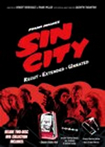
Robert Rodriguez Sin City (2005) with computer-generated visuals is based on Frank Miller’s comic book tale about a corrupt seedy and very rainy city with all the noir conventions. There is a voice-over narration (by Josh Hartnett), a tough-guy hero and ex-con Marv (Mickey Rourke), a manipulative femme fatale, Gail (Rosario Dawson), an aging cop, Hartigan (Bruce Willis).
A potted history of the genre is not sufficient for high marks. At least five or more texts need to be referenced in some detail with relevant contextualisation. It is possible to use some of the texts studied elsewhere in your Media Studies A Level.
Parody and Pastiche

Producers employ parody and pastiche in the Horror genre e.g. Shaun of the Dead (2004). These concepts are rooted in postmodernist theory, and the changing nature of modern audiences. For high marks students should understand the influence of postmodernism on film, and reference postmodern film with textual examples.
DefinitionsA parody film is a film that mocks through comedy films of a particular genre. Hot Fuzz is a recent British film that makes fun of the genre of cop action films.
A pastiche film borrows a number of themes and styles, or codes and conventions from other films even to the extent of copying some scenes and imitating others. The aim of pastiche is to make it obvious that these elements have been borrowed or imitated as a form of flattery to the original.
Intertextuality – Deliberate reference in a text to another media text or form which is already known to audiences. Often used by advertisers to link their product with a distinguished film or genre.
Some theory – don’t despair this is fun.
What is Postmodernism?
Postmodernism is a term used originally by art historians to describe the general movement of art, culture and society since the 1960s and into the 21st century.
As western society speeds up in terms of the information available 24/7 so the fragmentation of society becomes more marked. Large audiences with a broadband connection can access a flow of images and information some of which seem disconnected from their live source.
Postmodernism reflects the way western and, to a considerable extent global society, changed in the middle 20th century. Some say it was the influence of rock and roll but this was only one small reason. The real changes concerned traditional values such as religion, the traditional nuclear family and notions of race and class which became more fluid and uncertain. People felt insecure, and began questioning aspects of their identity, and their role in society as well as the value of religion and core cultural values.
This insecurity has persisted in the 21st century and the media reflects this shift in society with films, television programmes and print materials that reflect unease and a sense of disconnectedness. Genres come together in hybrids with multi-layered meanings.
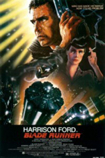
Examples of postmodern texts in the Sci-Fi genre include Ridley Scott’s Blade Runner, especially in the director’s cut of 2007, which borrows from the film noir genre and from the original Sci-Fi film Metropolis.
Another British example is Michael Winterbottom’s 24 Hour Party People about the Manchester music scene. The central character, based on music impresario Tony Wilson, often breaks out of the constructed world of the film and talks directly to camera. This suggests to the audience that the character is breaking out from the cultural and economic straight jacket of the music world at the time.
A characteristic of postmodernism is to make the viewer aware that he or she is watching an artifact, and not allow the audience to settle into a ‘suspension of disbelief’. You can investigate how this idea was first used by the French New Wave (the jump cut in Godard’s superb Bout de Souffle (1960) )
Quentin Tarantino’s Pulp Fiction is another good example of a postmodernist film as it does away with a conventional narrative structure and involves the audience with pastiche, parody and Intertextuality. Also look at Run Lola Run – a really lively and fascinating film that uses all sorts of genres within the film’s narrative structure, including animation.
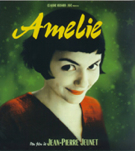
The French film Amelie (2001) employs postmodern editing techniques to engage the audience by, for example, speeding up the narrative at some points and adding extra information at others. The audience is constantly aware that it is watching a construct, but an engaging plot and rounded characters keep the codes and conventions of the Rom Com genre.
Increasingly art and the media look back to recent fashions and art forms for inspiration. Postmodernism borrows ideas and images from films, art, magazines, television and many other sources to recreate new texts and recycle new forms of older ideas. This idea of borrowing different signs and artefacts and putting them together to create something new is called by the French word bricolage.
Further Reading
For further study there is a great deal of research and academic work in the whole area of genre. Some useful titles:
Altman, Rick (1999) Film Genre, London: BFI
Neale, Steve (2000) Genre and Hollywood, London, Routledge
Neale, Steve (2002) Genre and Contemporary Hollywood, London, BFI
Branston and Stafford (2006) The Media Student’s Book, London, Routledge
Bignell & Orlebar (2005) The Television Handbook, London, Routledge